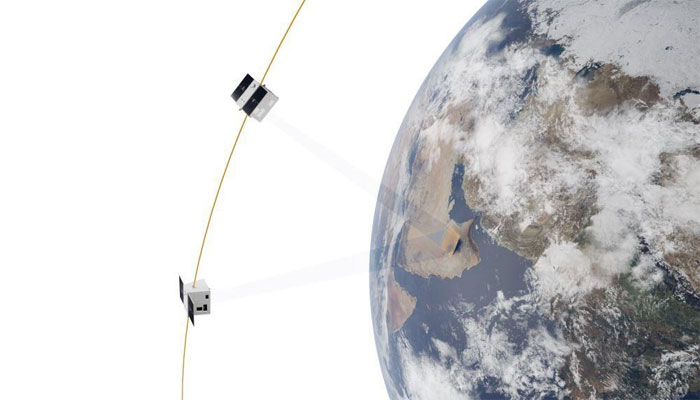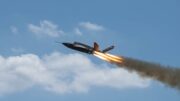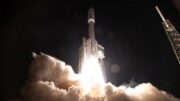When sizing space telecommunications systems, the ability to counter adverse atmospheric effects on ground to-satellite communication links is a key competitive advantage. It also optimizes the performance of future high-data-rate links for science and Earth-observation missions, using propagation channel models at a very early stage in the space system design process. Building and managing extensive experiment databases is therefore crucial to devise ever-more-precise models covering numerous frequency bands and diverse geographic and meteorological regions.
For more than 10 years now, CNES and ONERA have been deploying a network of ground-to-satellite links to characterize the atmosphere’s impact on very-high-frequency signals (>20 GHz). This work is being pursued under a joint CNES/ONERA PIC1 programme of shared interest called PERF22 started early last year. One of the major constraints concerning such propagation experiments is time, as for measurements to be representative of a space mission’s lifetime they must be collected over several years to factor in annual and monthly meteorological variability.
At the end of 2016, CNES and ONERA set up a Ka-band propagation experiment at the Guiana Space Centre. Four years on, measurements have been analysed and more than 99.5% of the data obtained are usable, making the experiment one of the most reliable ever completed by the radiofrequency science community. This new reference database adds to a heritage equalled only by the most active agencies in this field, NASA and ESA. The database already contains the longest known propagation experiment, with 11 years of uninterrupted measurements from Toulouse. It will now feed into specific models covering equatorial regions, where weather conditions have a much bigger effect on radiofrequency propagation than in temperate regions.
Leveraging their extensive expertise and given the strategic import of such measurements, CNES and ONERA have begun deploying multiple experiments in the French West Indies. Working with Eutelsat to manage transmitters on its Eutelsat 65 West A satellite and with DSNA, the French air navigation services provider, at Pointe-à-Pitre for the site accommodating the experiment, three ground receivers operating in Ku, Ka and Q bands3recently began operating in Guadeloupe. This tri-frequency experiment, making it possible in particular to correlate effects between bands, is a world first at these latitudes.
Source: CNES









Be the first to comment on "CNES AND ONERA LONGSTANDING PARTNERS AND WORLD LEADERS IN RADIOFREQUENCY PROPAGATION RESEARCH"